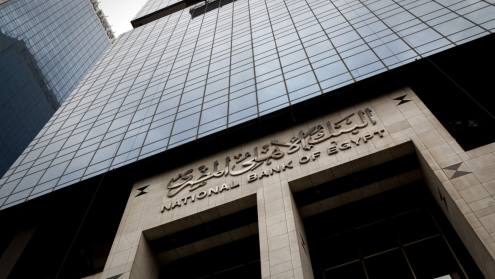Africa is becoming a zone of much freer trade than seemed conceivable a decade ago. One of the main tools for the reshaping of sub-Saharan Africa’s economic map is the new generation of economic partnership agreements (EPAs) being negotiated with the EU.
Blocs of west, central, east and south African states are discussing reciprocal trade agreements compatible with World Trade Organization (WTO) requirements, combined with EU support to help African economies to adapt. Free trade is to be introduced progressively from 2008 until 2020, and the EU says it will open its markets more than its 78 African, Caribbean and Pacific (ACP) partners, and dismantle its tariffs faster.
The man behind the concept, Pascal Lamy, a former EU trade commissioner and at the time of going to press a candidate for WTO director general, claims that the EPAs are as much about creating markets as they are about opening markets.
In Mali’s capital, Bamako, in April, the UK’s Peter Mandelson (Mr Lamy’s successor as EU trade commissioner) told the Joint Parliamentary Assembly of MPs from the EU and ACP states that the EPAs aimed to support regional integration between the ACP countries and secure them further market access in the EU. To achieve that, the EU will help to boost their capacity. Larger markets and economies of scale, combined with the removal of barriers, are expected to boost growth.
Mr Mandelson described the EPAs as “a 21st century response to development challenges – ambitious, different, creative – incorporating the best of development inventiveness, as well as development orthodoxy, in a way that is fit for a new century”. They will provide a stable framework for investors, and must be designed to complement and not contradict the wider anti-poverty strategy spelled out in the Millennium Development Goals, he said.
However, he conceded that rigorous European hygiene standards posed a significant challenge for some ACP exports.
Picking teams
EPA implementation raises a number of practical problems. The EU’s insistence that ACP states must choose only one regional group to negotiate their EPA in, even if they belong to several (like Mauritius or Democratic Republic of Congo) has created a dilemma for a number of African countries.
At the June 2004 ACP summit in Maputo, Joachim Chissano, then ACP chairman and Mozambican president, warned that the negotiations should strengthen regional co-operation and not provoke the collapse of regional organisations.
Member states of the Southern African Development Community (SADC), long seen as Africa’s best example of regional co-operation, have gone off in different directions to negotiate their EPAs. Last July in Windhoek, Namibia, the European Commission (EC) started talks with an SADC group of only Angola, Botswana, Lesotho, Namibia, Mozambique, Swaziland and Zambia. Mauritius, Zimbabwe, Tanzania, Malawi, the Democratic Republic of the Congo and Madagascar (which might join the SADC in July) preferred to negotiate within the Eastern and Southern Africa (ESA) configuration, which includes members of the Common Market for Eastern and Southern Africa (Comesa) that do not belong to SADC.
As South Africa has its own separate Trade and Development Co-operation Agreement with the EU, which came into force in May 2004, SADC member states find that they are split into different trade regimes with the EU.
The agreements promise to be extremely complex. The EPA for the Economic and Monetary Community of Central Africa (Cemac) will have to accommodate the EU’s Everything But Arms initiative, which allows goods to enter Europe duty free, as well as benefits for low income countries, island or landlocked states such as São Tomé e Príncipe and Central African Republic, and different treatment for middle-income countries such as Gabon or Cameroon.
Monetary quagmire
Another issue to be overcome is the integration of countries with different currencies into the same trading blocks. Within the SADC, the members of the Southern African Customs Union peg their currencies to the South African rand, while non-members do not. Only in Cemac do all the states share a currency, the CFA franc which is pegged to the euro.
The Economic Community of West African States (Ecowas) has eight members that belong to the CFA-using Western African Economic and Monetary Union (WAEMU), while Nigeria, Gambia, Ghana, Guinea, Liberia and Sierra Leone plan to create a second monetary union, the Western African Monetary Zone (WAMZ), and later merge it with the WAEMU.
WAMZ member states have had difficulty in meeting convergence criteria, such as the maximum fluctuation against the US dollar, and have postponed the creation of their union to July 1.
The current weakness of intra-regional trade in western Africa (10% of the total) may limit the benefits of monetary union. WAEMU states will have to consider that a single currency would probably mean removing the link between the western African CFA franc and the euro – France is not prepared to extend its historic guarantee to such a large country as Nigeria.
The EPAs, like any trade liberalisation exercise, will reduce state revenues. Losses have been estimated at 5.3% for Botswana, 8.6% for Namibia, 12.9% for Lesotho and 13.9% for Swaziland. Projections for the WAEMU for the 2008-17 period put the loss of revenue at CFA Fr1460bn ($2.8bn). Ivory Coast would be the worst affected, with losses estimated at CFA Fr526bn, followed by Senegal (CFA Fr444bn), Mali (CFA Fr54bn) and Benin (CFA Fr122bn).
Mr Mandelson argued that “more reasonable” levels of import duty would boost ACP state revenues. He said that the EU was prepared to help restructure its partners’ taxation systems, and about €650m was earmarked for capacity strengthening in ACP trade sectors. But the commissioner still has to convince his African partners.
NGO concerns
EPAs face growing hostility from African groups that see them as an instrument of globalisation that could wipe out their already weak manufacturing and agricultural sectors. In a joint statement circulated in Bamako in April, west African regional non-governmental organisations and farmers’ associations call EPAs “a weapon of mass destruction against African and ACP economies”.
Campaigners argue that trade liberalisation alone does not automatically lead to positive development outcomes. ACP countries are being forced to open up to EU goods before they are in a position to compete.
Ibrahim Coulibaly, chairman of the Association of Professional Producers of Mali, fears that EPAs will increase Africa’s food deficit. “There is no example in history of a country that managed to develop its agriculture by opening its markets, especially when the game is biased by the EU’s farm subsidies,” he says. “Even the import of products that we don’t produce is already undermining our agriculture. Wheat is a case in point. Its price is so low that the consumption of bread has expanded all over the continent, to the detriment of sorghum and millet producing farmers.”
The activists argue that Africa should seek to protect itself. They cite the example of Cameroon, where at the beginning of the year local poultry farmers managed to force their government to impose quotas on imports of EU frozen chicken that were undermining the local poultry sector.
CAP reform
One of the reasons for Africa’s concern about trade liberalisation is that, although the EU claims that it wants to boost the competitiveness of African producers, it is already showing reluctance to meet its partners’ requests to be compensated for the consequences of the reform of its Common Agricultural Policy (CAP).
This affects African sugar producers because the price of ACP sugar exports to the EU is calculated on the EU’s internal intervention price. CAP reform seeks to reduce subsidies to European domestic producers and gradually reduce the intervention price. Swaziland’s sugar export revenue could fall by up to 40% a year and Mauritius could eventually see its earnings fall to €142m from €257m.
Another ACP concern is cotton. Mr Mandelson announced a package of measures for cotton in Bamako. From early 2006, 65% of subsidies to European farmers will be delinked from production levels. As a result, European farmers are expected to produce less cotton, which should benefit African cotton growers – although it is US subsidies, rather than European ones, that are the campaigners’ biggest gripe. The EU will support African cotton producers at the next ministerial conference of the Doha round in December in Hong Kong.
Mr Mandelson said that although there would be losers among the ACP states as a result of the CAP reform, those that could increase their production and remain competitive would continue to reap benefits from their exports to the EU.











